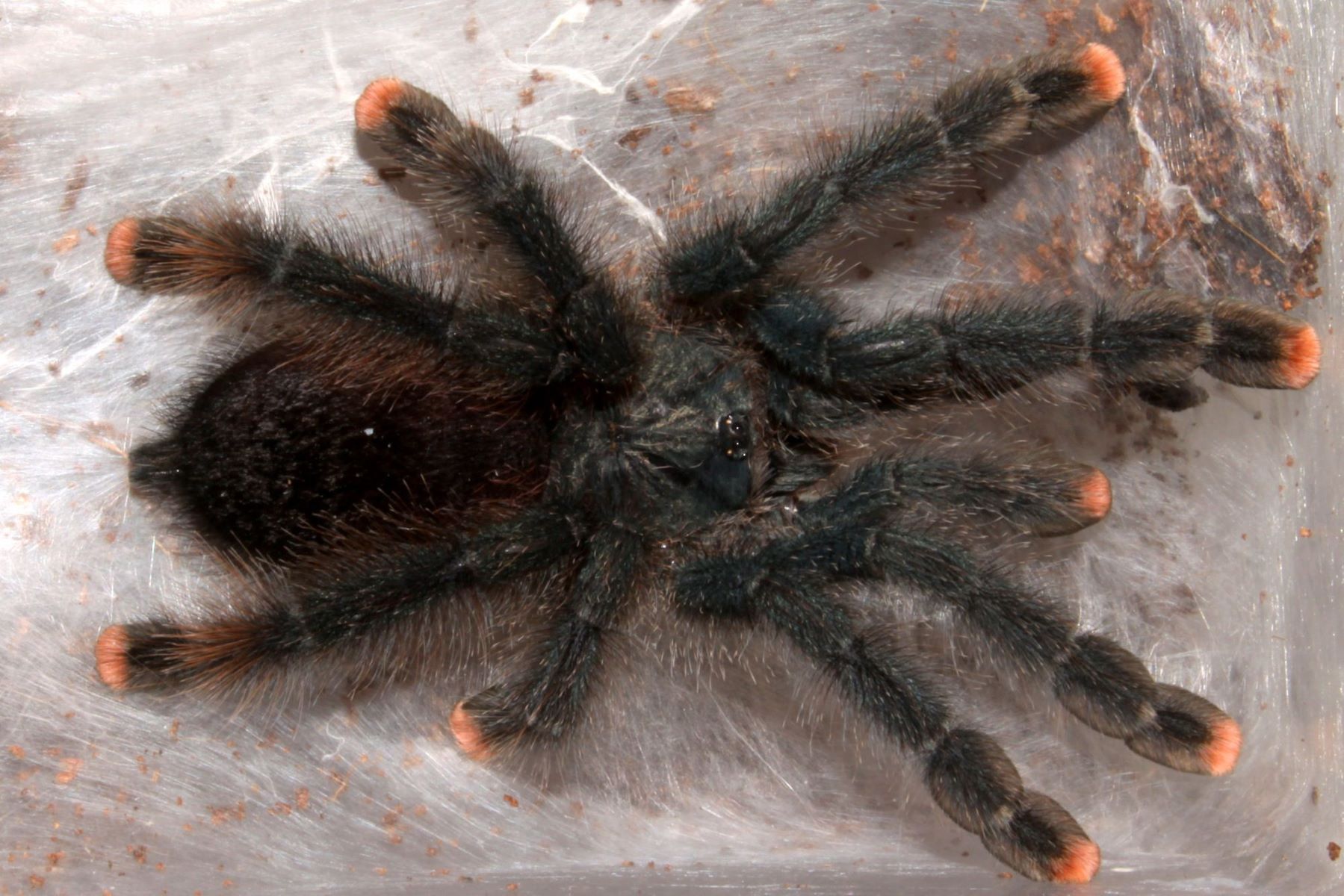
The Martinique Pinktoe Tarantula, also known as Avicularia versicolor, is a mesmerizing and enigmatic creature that captivates the attention of arachnid enthusiasts. This elegant tarantula species hails from the tropical rainforests of Martinique, an island in the Caribbean. Its unique appearance and intriguing behaviors make it a sought-after addition to spider collections around the world.
In this article, we will delve into the astonishing world of the Martinique Pinktoe Tarantula and uncover eleven fascinating facts about this exotic arachnid. From its vibrant coloration to its arboreal lifestyle, this species is sure to pique your curiosity. So, let’s embark on a journey of discovery and explore the incredible attributes that make the Martinique Pinktoe Tarantula an extraordinary creature.
Key Takeaways:
- The Martinique Pinktoe Tarantula is a colorful and calm species native to Martinique, known for its arboreal nature and skilled climbing abilities. It preys on insects and has a complex breeding process.
- Female Martinique Pinktoe Tarantulas live longer than males, with a lifespan of 10-12 years compared to males’ 3-5 years. They also possess urticating hairs for defense and go through multiple molting stages.
The Martinique Pinktoe Tarantula is native to the Caribbean island of Martinique.
This stunning species of tarantula, scientifically known as Avicularia versicolor, can be found exclusively in the lush rainforests of Martinique.
It gets its name from its beautiful pink and blue coloration.
The Martinique Pinktoe Tarantula is highly sought after by tarantula enthusiasts due to its unique and vibrant coloring. Its legs display a striking pink hue, while its abdomen showcases shades of blue.
It is arboreal in nature.
The Martinique Pinktoe Tarantula is primarily a tree-dwelling species. It spends most of its life climbing trees and building intricate webs to catch its prey.
This species of tarantula is known for its docile temperament.
Unlike many other tarantulas, the Martinique Pinktoe Tarantula is generally calm and non-aggressive. It rarely displays defensive behavior, making it a popular choice for tarantula enthusiasts and collectors.
The Martinique Pinktoe Tarantula is a relatively small tarantula species.
With a leg span of around 4-5 inches, this species is considered small compared to other tarantulas. However, its vibrant coloration and unique characteristics more than make up for its size.
It is a skilled climber.
The Martinique Pinktoe Tarantula has specially adapted scopulae, which are small bristles on its feet that allow it to grip onto surfaces as it climbs trees and branches with ease.
This tarantula species goes through several molting stages in its lifetime.
As the Martinique Pinktoe Tarantula grows, it sheds its exoskeleton in a process called molting. This allows for growth and repair of damaged body parts.
It is a carnivorous predator.
The Martinique Pinktoe Tarantula mainly preys on insects and other small arthropods. It immobilizes its prey with its venomous bite and then consumes it at its leisure.
Female Martinique Pinktoe Tarantulas live longer than males.
Females of this species can live up to 10-12 years, while males have a significantly shorter lifespan of around 3-5 years. This difference in lifespan is a common characteristic among many tarantula species.
It possesses urticating hairs for defense.
The Martinique Pinktoe Tarantula has specialized hairs on its abdomen that it can flick off when threatened. These hairs can cause irritation and discomfort to potential predators, acting as a form of defense.
The breeding process of this tarantula species is complex.
Mating in the Martinique Pinktoe Tarantula involves a carefully orchestrated courtship dance between the male and female. After successful mating, the female creates an egg sac where she protects and cares for her young until they hatch.
Conclusion
The Martinique Pinktoe Tarantula is truly a fascinating creature with its vibrant colors, unique characteristics, and intriguing behaviors. From its striking pink toes to its arboreal nature, this tarantula captivates both arachnid enthusiasts and general animal lovers alike. With its venomous bite and web-spinning abilities, the Martinique Pinktoe Tarantula truly exemplifies the diversity and wonders of the animal kingdom. Whether you’re exploring the rainforests of Martinique or simply admiring them from afar, these astonishing facts about the Martinique Pinktoe Tarantula make it a creature worth delving into and experiencing firsthand.
FAQs
Q: Are Martinique Pinktoe Tarantulas dangerous?
A: While their venom is not considered highly dangerous to humans, their bite can cause discomfort and irritation. It is always best to exercise caution and avoid direct contact.
Q: What is the lifespan of a Martinique Pinktoe Tarantula?
A: On average, they can live for around 8 to 10 years in captivity with proper care and conditions.
Q: How do Martinique Pinktoe Tarantulas defend themselves?
A: These tarantulas use their venomous bite as their primary defense mechanism. They will also flick urticating hairs from their abdomen when threatened.
Q: Are Martinique Pinktoe Tarantulas social creatures?
A: No, they are solitary creatures and prefer to live alone. It is best to house them separately to prevent aggression or cannibalism.
Q: What do Martinique Pinktoe Tarantulas eat?
A: In the wild, their diet consists of insects, beetles, and other small invertebrates. In captivity, they can be fed a variety of live or pre-killed prey items such as crickets and roaches.
Q: Do Martinique Pinktoe Tarantulas require any special care?
A: Yes, they need a well-maintained enclosure with appropriate humidity levels, a suitable substrate, and a hiding spot. It is also crucial to provide them with a proper diet and a consistent temperature range.
Was this page helpful?
Our commitment to delivering trustworthy and engaging content is at the heart of what we do. Each fact on our site is contributed by real users like you, bringing a wealth of diverse insights and information. To ensure the highest standards of accuracy and reliability, our dedicated editors meticulously review each submission. This process guarantees that the facts we share are not only fascinating but also credible. Trust in our commitment to quality and authenticity as you explore and learn with us.
